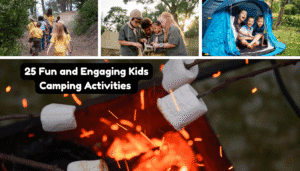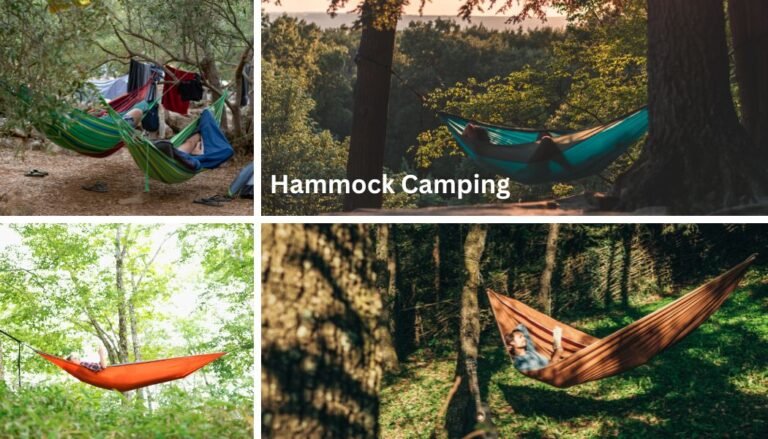Why Camping with Kids Is the Perfect Opportunity for Adventure and Learning
Camping with kids is an incredible way to bond as a family and create lifelong memories. However, keeping them entertained can sometimes feel like a challenge. Whether you’re a seasoned camper or a first-timer, I’ve got you covered with this list of fun and engaging kids camping activities that will turn your camping trip into an unforgettable adventure. Did you know that spending time outdoors can improve a child’s mood and creativity by up to 50%? Let’s jump into these amazing ideas that are sure to keep your little explorers happy, engaged, and loving nature.
Nature Exploration Activities
Scavenger Hunts: Create Lists of Items for Kids to Find, Like Leaves, Rocks, or Animal Tracks
Scavenger hunts are one of my go-to activities whenever we’re outdoors with a group of kids. It’s honestly amazing how engaged they get when there’s a “mission” to complete. I usually prepare a simple list ahead of time, things like a smooth rock, a red leaf, or an animal track. If you’re feeling fancy, you can even laminate the lists and reuse them. One time, I included a feather on the list, and it sparked a full-blown conversation about the types of birds in the area. Check out our download page for Nature Bingo Cards and Children’s Activity Sheets.
Pro tip: Don’t make it too easy or too hard. I once put “acorn” on a list during a trip to a pine forest (oops). The key is knowing what’s available in the area beforehand. To spice things up, I sometimes add challenges like “find something that smells good” or “find something you think is older than you.” It makes the hunt more creative and fun for kids of all ages.
Bug and Insect Spotting: Teach Kids About Local Insects Using a Magnifying Glass
I must admit, I have always been a fan of bugs. But kids? They love them. Armed with a magnifying glass and some patience, I’ve found that bug spotting can turn even the most reluctant little explorer into a mini entomologist. Caterpillars, ants, and ladybugs are usually the stars of the show. One summer, we found a praying mantis in the garden, and the kids were absolutely fascinated.
If you want to get extra fancy, bring a small notebook for the kids to draw or describe the bugs they find. It’s a fun way to introduce the idea of a “field journal” without them even realizing they’re learning. Just be sure to teach them to respect the insects, and no squishing allowed! Oh, and a word of warning: avoid areas with too many bees or wasps if you’re not prepared for that adventure. Trust me on this one.
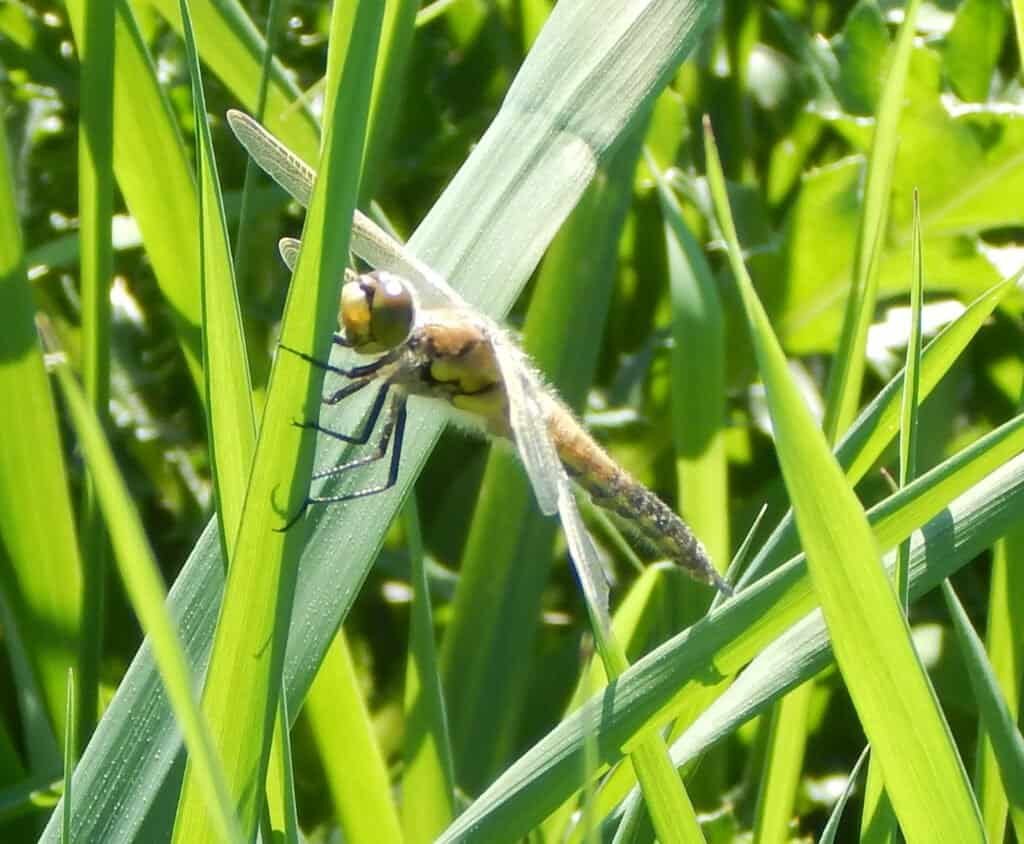
Nature Art: Use Sticks, Leaves, and Rocks to Create Art Projects
Nature art is where creativity meets the great outdoors. It’s as simple as gathering a bunch of leaves, twigs, and rocks and letting the kids’ imaginations run wild. One activity we did last fall involved creating leaf animals, such as a fox made from maple leaves or a butterfly made from aspen leaves. The results were Pinterest-worthy, though I’ll admit some looked more like blobs than animals.
Here’s a tip: pack some glue sticks or double-sided tape if you want the projects to stay intact for longer. Otherwise, nature’s wind has a habit of “editing” their masterpieces. I’ve also used flat rocks for painting; just grab some washable paints or markers and let them decorate. It’s a calming activity and gives the kids something tangible to take home.
Tree Identification: Learn About Different Trees by Their Leaves or Bark
Tree identification is an activity I’ve grown to love because, honestly, I’ve learned just as much as the kids. Start simple; oak, maple, and pine are usually easy ones to recognize. One time, I brought along a pocket guidebook, and we spent a morning matching leaves to their tree species. Kids loved rubbing bark with crayons and paper to “collect” textures, which was a great way to remember the trees we saw.
If you don’t have a guidebook, no worries. Apps like iNaturalist can be a lifesaver for identifying trees on the go. You’d be surprised how quickly kids can differentiate by looking at bark patterns or the shape of leaves. Just don’t make the rookie mistake I made of misidentifying some poison ivy as “some random plant”; thankfully, no one touched it!
Campfire Fun
Storytelling around a campfire is pure magic. There’s something about the flicker of the flames that makes every word feel more captivating. When I was a kid, my grandpa would tell us these wild stories about his “adventures” in the forest, most of which were obviously made up. But I believed every word and loved every minute.
Now, when I’m the storyteller, I mix family tales with a touch of creativity. Kids love hearing about when you were their age, especially if it involves funny or slightly spooky moments. If you’re making up a story, keep it interactive and ask them to decide what happens next or name the main character. One time, the kids invented a “Firelight Dragon” that only appeared during campfires, and they talked about it for weeks. Check out our download page for campfire stories books.
S’mores and Campfire Cooking: Teach Kids How to Make Camping Treats
Let’s be honest: campfires without s’mores are like birthdays without cake. But s’mores aren’t the only treat worth trying. I always start with the classic combo; graham crackers, chocolate, and marshmallows, but then we experiment. Have you ever added peanut butter cups or a slice of banana? Game-changer.
Safety is key here, especially with younger kids. I teach them how to safely roast marshmallows by holding the stick at the edge of the fire, not in the flames. Nobody likes a burnt marshmallow (okay, maybe some people do). And if you want to get fancy, try foil pack meals; just toss some sliced potatoes, veggies, and protein of choice (beef, chicken etc.), along with seasoning, into foil, seal it up tight, and let the fire do its thing. It’s simple, delicious, and feels like you’re cooking with magic.
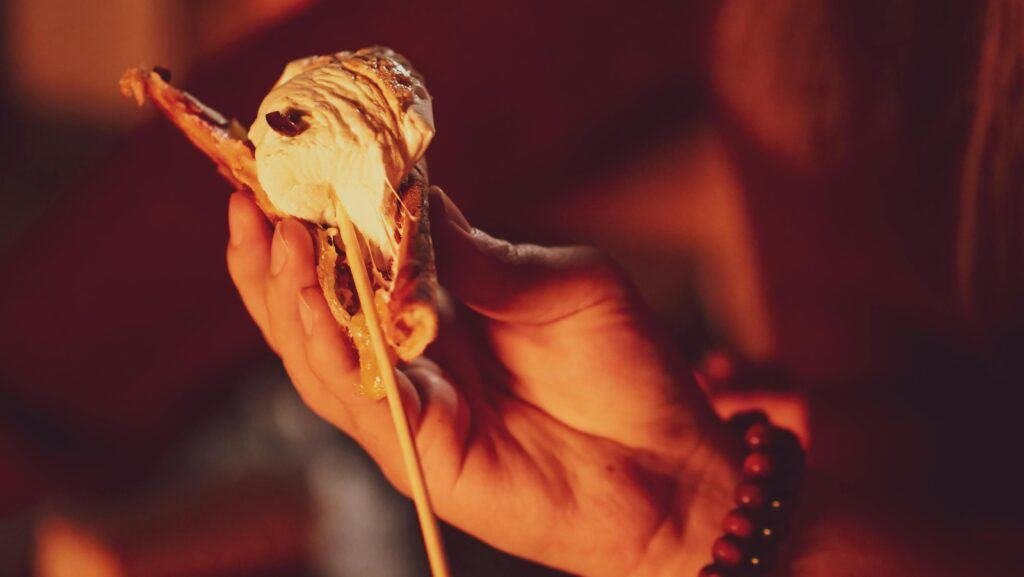
Campfire Songs: Sing Classic Tunes or Make Up Your Own
There’s something timeless about singing around a campfire. Even if you can’t carry a tune (like me), the kids don’t care; they’ll join in anyway. Classics like “This Land Is Your Land” or “She’ll Be Coming ‘Round the Mountain” are always hits. But sometimes, making up silly songs on the spot is even better.
One of my favorite memories was when we turned a camping mishap into a song. Our tent leaked during a storm, so we made up lyrics about “The Night We Slept in a Puddle.” It was ridiculous, but we laughed so hard we forgot about the soggy blankets. If you bring along an instrument like a ukulele, it adds an extra layer of fun (and noise, but hey, it’s worth it).
Shadow Puppet Shows: Use Flashlights and Hands for Imaginative Storytelling
Shadow puppet shows are the unsung heroes of campfire entertainment. All you need is a flashlight, a little creativity, and a willingness to get silly. I remember one night when we made up a whole story about a rabbit who outsmarted a wolf. My “rabbit” hand shadow wasn’t perfect, but the kids were hooked.
The trick is to practice a few shapes beforehand like bunnies, birds, and dogs are easy starters. Once the kids see how it’s done, they’ll want to try, too. If you really want to impress, bring along a sheet or light-colored blanket to use as a screen. It turns a simple activity into a full-blown production. Just be ready to clap for their “Oscar-worthy” performances!

Games for the Outdoors
Hide and Seek: An All-Time Favorite in a Natural Setting
Hide and seek takes on a whole new level of fun when played outdoors. Trees, bushes, and boulders make perfect hiding spots, and there’s always that thrill of discovery when someone sneaks up on you. I’ll never forget the time one of the kids hid so well behind a massive tree trunk that we almost gave up looking. When they finally came out, they were grinning like they’d won a gold medal.
To keep it safe, especially for younger kids, I usually set clear boundaries like, “Don’t go past the big rock” or “Stay within shouting distance.” It’s also a good idea to have an “it” timer so the seeker doesn’t wander too long. For an added twist, play reverse hide and seek, where one person hides, and everyone else searches. The suspense of spotting the lone hider is so much fun!
Capture the Flag: Great for Groups at Larger Campsites
Capture the Flag is hands-down one of the best outdoor games for groups. It’s all about strategy, teamwork, and a little bit of running (or a lot, depending on how competitive everyone is). I always recommend bringing brightly colored bandanas to use as flags; trust me, you don’t want anyone claiming they didn’t “see” the flag.
The game works best if you divide the area into two equal zones, with clear borders marked by sticks or a natural feature, like a trail. One time, we played on a campsite with a big open meadow and tree line, and it felt like we were in a movie. Just make sure everyone knows to watch their footing; tripping over a root while running full speed is no fun.
Relay Races: Set Up Courses Using Natural Obstacles
Relay races are pure energy-packed chaos, but that’s what makes them so fun. I like to design courses using whatever’s around; jumping over logs, weaving through trees, or even crawling under low-hanging branches. It’s like creating your own mini obstacle course.
One summer, we had kids pass a pinecone as their “baton,” and it turned into a hilarious challenge because the pinecone kept falling apart. Lesson learned: pick something sturdy! To make it more inclusive, mix in silly elements, like hopping on one foot or crab-walking to the next teammate. And don’t forget to cheer everyone on; it’s all about having fun, not just winning.
Rock Stacking Contests: Who Can Build the Tallest Structure?
Rock stacking contests might not seem as intense as other games, but they’re surprisingly competitive. The goal is simple: find rocks and stack them as high as you can without the whole thing toppling over. There’s an art to picking the right rocks; flat ones work best for the base, while oddly shaped ones add a fun challenge for the top.
I remember one contest where a kid managed to stack eight rocks, and we all held our breath as they balanced the final one. Of course, it collapsed in dramatic fashion, but the excitement was unforgettable. This game is perfect for quiet moments when everyone needs a breather. Plus, it’s a sneaky way to teach kids about balance and physics without them even realizing it.
Water-Based Activities
Fishing: Teach Kids Basic Fishing Skills
Fishing is such a timeless activity that combines patience, skill, and a little bit of luck. Teaching kids to fish is even better because their excitement over every nibble is contagious. I still remember the first time my nephew caught a fish; it was a tiny perch, but you’d think he reeled in a shark from the way he celebrated.
Start with the basics: show them how to bait the hook (using worms or even artificial bait), cast the line, and wait patiently. For kids, lightweight rods are easier to manage, and using bobbers helps them see when a fish bites. A great tip is to fish in areas with plenty of small, active fish to keep things engaging. Trust me, the thrill of catching a fish, no matter the size, is unforgettable.
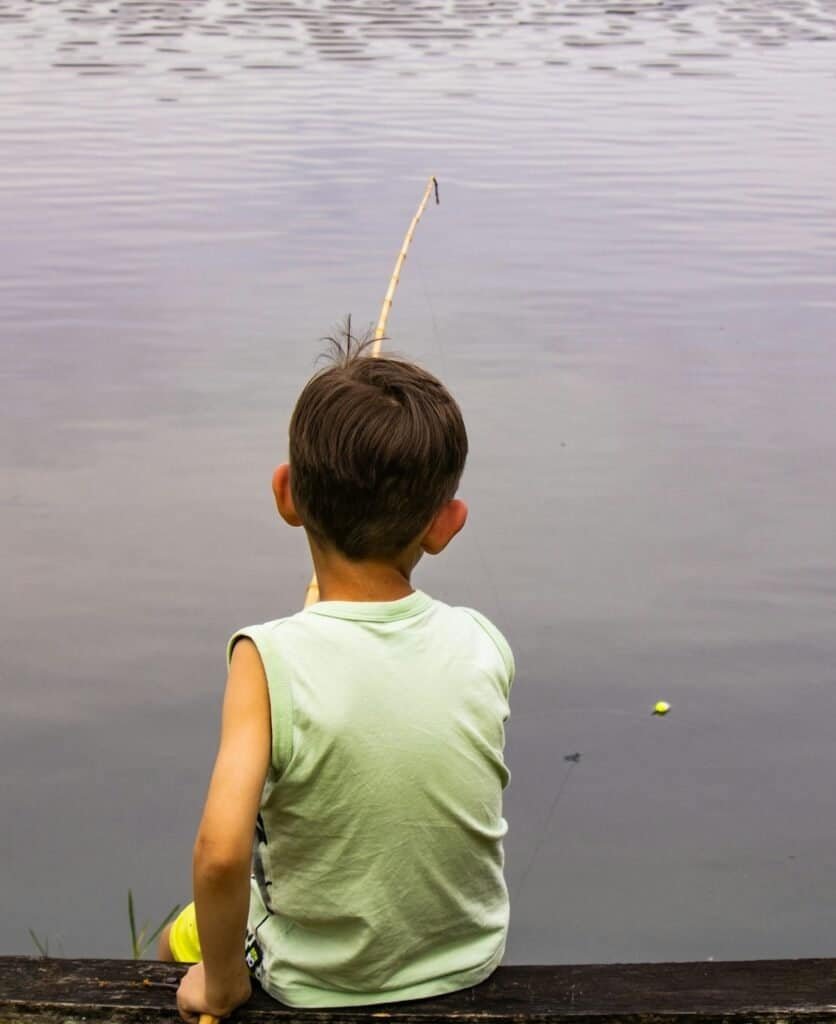
Skipping Stones: Find Flat Rocks and Practice Technique
Skipping stones is such a simple joy, but it’s also a bit of an art form. The trick is finding those flat, smooth rocks that glide easily across the water. One summer, we spent an entire afternoon trying to outdo each other’s “skips.” My record was seven bounces, and I’ve been chasing it ever since!
The key is in the wrist flick, holding the rock between your thumb and forefinger, then releasing it parallel to the water’s surface. Kids will pick it up fast, and before you know it, they’ll be challenging each other. Plus, it’s a great way to sneak in a little lesson about physics without feeling like “school.”
Stream Exploration: Let Kids Explore Shallow Streams for Small Critters or Interesting Rocks
Streams are nature’s playground. There’s something endlessly fascinating about wading into cool, shallow water and discovering what’s hiding beneath the surface. I’ve seen kids spend hours turning over rocks to find crayfish, snails, or water bugs. One time, we even found a salamander, which led to a full-blown “nature documentary” moment narrated by the kids.
To make it more interactive, bring along a small net and a clear container for temporary observation. Safety is important here; make sure the water isn’t too deep and that the kids wear sturdy shoes to avoid slipping. The best part? They’ll leave with a deeper appreciation for aquatic life and maybe even a collection of “special” rocks to show off.

Water Balloon Toss: Perfect for Campsites Near Water Sources
Few things are as universally fun as a good water balloon toss. It’s one of those activities that starts off calm and inevitably turns into a full-on splash war, and honestly, that’s the best part. We once had a contest to see who could keep their balloon intact the longest, but it ended with everyone soaking wet and laughing hysterically.
If you’re near a water source, filling up balloons is easy and ensures the fun lasts longer. Pair up and start close together, then take a step back after each toss. When the balloon bursts (and it will), it’s like instant giggles. Just remember to pick up the broken balloon pieces to keep the area clean and safe for wildlife.
Stargazing and Night Adventures
Constellation Spotting: Bring a Star Map and Identify Constellations
Stargazing feels like stepping into a whole other world, especially when you’re out in nature with zero light pollution. The first time I brought a star map camping, it was a game changer. We laid out a blanket, turned off all the flashlights, and just let our eyes adjust to the dark. Pretty soon, the sky came alive.
Cassiopeia and the Big Dipper are great starter constellations because they’re easy to find. Once we spotted those, it became a scavenger hunt to find the others. I’ve learned that a red flashlight is perfect for checking the map without ruining your night vision. And for tech-savvy kids, star-gazing apps can make it even cooler, showing constellations as you move your phone around the sky.

Glow Stick Tag: Safe and Fun for Nighttime Play
If you’ve never played glow stick tag, you’re missing out. It’s like regular tag but with a neon twist! Give each kid a glow stick; either to hold or wear—and let the fun begin. The glowing figures darting around the dark campsite make it look like a surreal light show.
One tip: designate a well-defined play area and check for tripping hazards during the day. You can even mix it up by using different glow stick colors for “teams.” The game burns off energy, and it’s a lot less scary than playing in total darkness. Plus, it’s hilarious to watch someone try to sneak up while glowing like a traffic cone.
Moth Watching: Attract Moths with a Flashlight and a White Sheet
Moth watching is such a quirky but fascinating activity that even the most skeptical kids will enjoy. Set up a white sheet and shine a flashlight on it, and before you know it, moths of all shapes and sizes will show up for their moment in the spotlight. It’s like a miniature insect theater!
One evening, we counted over 15 different kinds of moths on our sheet, and the kids were amazed at how unique each one was. To make it educational, bring along a field guide or just use your phone to identify them. It’s a quiet, almost meditative activity that’s perfect for winding down after a busy day. Campfire Stargazing: Combine Storytelling with Learning About the Stars
Campfire stargazing is the perfect blend of coziness and wonder. There’s something magical about leaning back, feeling the warmth of the fire, and gazing at the vastness above. We usually start with stories, sometimes real-life camping tales, and other times made-up adventures featuring constellations as characters.
One memorable night, we made up a story about Cassiopeia being a brave queen who protected the forest. The kids loved it and even started pointing out other “heroes” in the sky. If you have a telescope, bring it along to get a closer look at the moon or Saturn’s rings. But even without one, just watching shooting stars and learning a few celestial fun facts makes for an unforgettable experience.
Arts and Crafts in Nature
Leaf Rubbings: Use Crayons and Paper to Capture Leaf Patterns
Leaf rubbings are a classic for a reason, they’re simple, satisfying, and bring out the hidden details in nature. I remember the first time I introduced leaf rubbings on a camping trip. The kids ran off to collect the most unique leaves they could find. Maple, oak, and even some we couldn’t name (note to self: bring a tree guide next time) made their way back to the picnic table.
We placed the leaves under a piece of paper and rubbed crayons over the top, watching the intricate veins and edges appear like magic. For added fun, try layering leaves or using multicolored crayons.
Pro tip: Make sure the leaves are dry, as wet leaves will just rip the paper and frustrate everyone.
Painting Rocks: Bring Paints or Use Mud for Natural Art
Painting rocks is a creative outlet that blends art with nature. One trip, we didn’t bring paints, so we improvised with mud, berries, and charcoal from the campfire. It was messy, but the kids loved every second of it. If you do bring paints, go for washable ones (trust me on this, and your tent will thank you).
The designs ranged from abstract squiggles to little animals and landscapes. After they dried, we placed the rocks around the campsite like mini sculptures. It’s a great way to leave a little non-invasive art in nature. Just remember to take any painted rocks with you when you leave to respect the environment.
Bracelet Making: Use Twine and Beads Found in Nature
Bracelet making is a hit with kids and adults alike. One of my favorite camping memories was scavenging for “beads” in nature; think small shells, hollow twigs, and even colorful berries (non-toxic ones, of course). Pair these with twine or yarn, and you’ve got yourself a DIY craft session.
We sat around the picnic table, threading our finds onto twine, and it turned into a fun competition over who could make the most unique bracelet. Some even tied in tiny feathers or pine needles for extra flair. Not only does it keep everyone entertained, but the bracelets make lovely keepsakes of your trip.
Journaling: Encourage Kids to Draw or Write About Their Camping Adventures
Journaling might not seem exciting at first, but once you get kids started, it becomes a treasure trove of creativity. One evening, I handed out journals and pencils and asked everyone to sketch or write about their favorite part of the day. I wasn’t expecting much, but the results were incredible tiny doodles of squirrels, lists of “cool bugs,” and even a short poem about the campfire.
If drawing isn’t their thing, encourage storytelling. Some kids wrote about imaginary camping adventures, complete with dragons and treasure maps. For older kids, suggest documenting observations like the weather, animal sightings, or the sound of the forest at night. It’s a quiet, reflective activity that helps everyone unwind and connect with their surroundings.
Educational Activities
Survival Skills Basics: Teach Kids How to Tie Knots or Purify Water
Survival skills might sound serious, but they’re incredibly fun to teach and learn. One time, I decided to teach my niece and nephew some basic knot tying, and let me tell you, it quickly turned into a competition. We practiced tying a square knot, a bowline, and a clove hitch using ropes I brought from home. To make it memorable, I set up a “challenge” where they had to secure a tarp using their new skills. Spoiler alert: the tarp was flapping like crazy, but they were so proud of their work!
Purifying water was another activity that sparked curiosity. I brought a simple water filtration straw and a small camp stove to boil water. Explaining the importance of clean water and how to achieve it felt like a mini science class in the woods. The kids were fascinated, and it sparked a deeper appreciation for the resources we often take for granted.
Wildlife Identification: Learn About Local Animals and Birds
Wildlife identification is like a real-life treasure hunt. I remember bringing a pair of binoculars and a small field guide on one trip, and we spent the morning spotting birds near the campsite. There was something magical about identifying a cardinal by its bright red feathers or recognizing a woodpecker by its rhythmic pecking sound.
For added fun, we made a checklist of local animals to look for, including squirrels, deer tracks, and even insects like dragonflies. To our surprise, we found a turtle basking by a stream, which became the highlight of the day. If you don’t have a guidebook, smartphone apps can help identify animals and their calls; just make sure to keep the volume low to avoid scaring them off.

Compass navigation is a lost art, but it’s such a valuable skill to have. I’ll never forget the time I handed my nephew a compass and map, thinking it’d be a quick lesson. It turned into an hour-long adventure of figuring out where we were (spoiler: we weren’t as close to the trail as I thought).
Start by showing kids how to orient the map and find north using the compass. Then, set up a simple course with landmarks for them to navigate toward. It’s a hands-on way to teach them spatial awareness and problem-solving. Plus, the look of triumph when they find their way back is priceless.
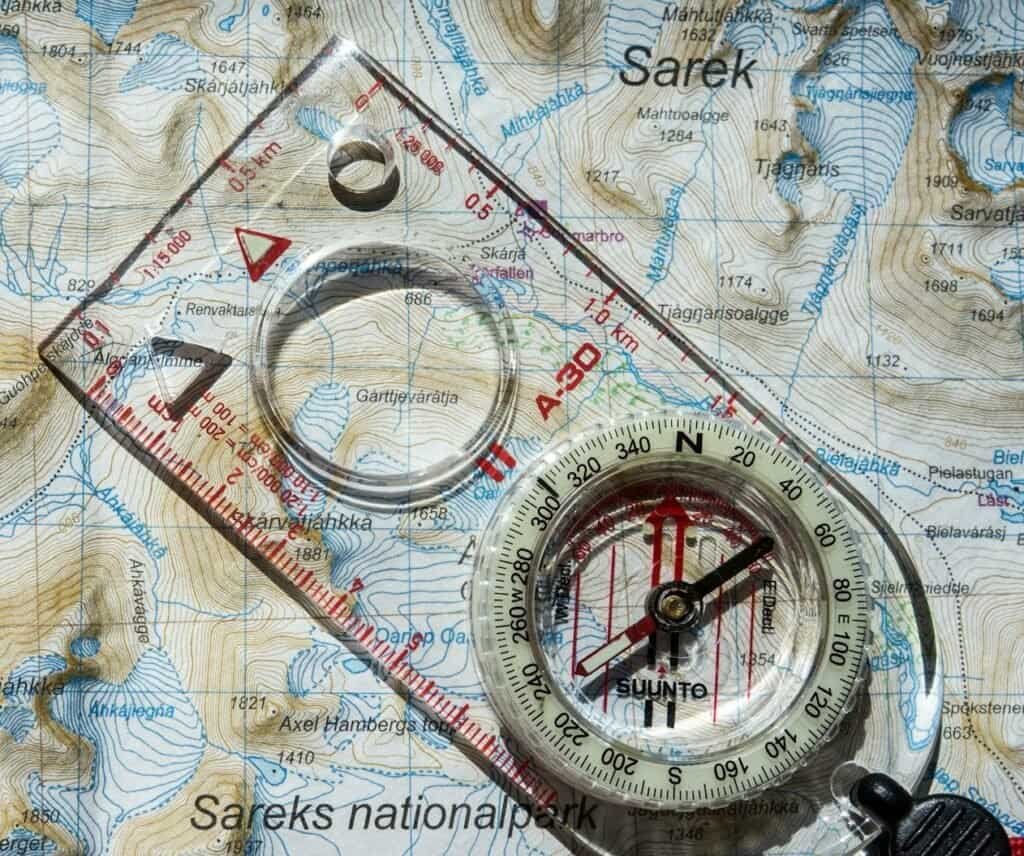
Eco-Friendly Lessons: Teach Leave No Trace Principles
Teaching Leave No Trace principles is one of the most impactful things you can do during a camping trip. It’s a lesson that sticks with kids and helps preserve the beauty of nature for everyone. I usually start with simple rules, like packing out all trash and avoiding disturbing plants or wildlife.
One time, we spent a few minutes cleaning up a trail near our site. It wasn’t much – just some wrappers and a stray water bottle – but the kids felt like environmental superheroes. Another great activity is demonstrating how to minimize campfire impact by using a designated fire pit and keeping it small. These moments plant seeds of responsibility that kids carry into future adventures.
Making Memories: Why These Camping Activities Will Be Unforgettable for Your Kids
Camping with kids doesn’t have to be a stressful experience; it’s an opportunity to inspire curiosity, creativity, and a love for the outdoors! By incorporating these activities into your trip, you’ll create a fun, educational, and memorable adventure for the whole family. Ready to plan your next camping trip? Get started today and make it an experience your kids will talk about for years to come!
FAQ Section
What are some easy camping activities for toddlers?
Toddlers can enjoy simple activities like collecting leaves, throwing rocks into the water, playing with glow sticks, or listening to stories around the campfire. Keep activities safe and supervised to ensure a great experience for little ones.
How can I keep older kids engaged during a camping trip?
Older kids might enjoy activities that involve creativity and problem-solving, like scavenger hunts, compass navigation, building a campfire, or participating in competitive outdoor games like Capture the Flag or relay races.
What should I pack to support kids’ activities while camping?
Essential items include:
– Art supplies (like crayons, paper, and paints)
– Binoculars for wildlife spotting
– A star map for stargazing
– Glow sticks or flashlights
– Fishing gear and outdoor-friendly toys
Are there any educational activities suitable for kids while camping?
Absolutely! Teach them about local wildlife, basic survival skills, Leave No Trace principles, or how to use a compass and read a map. Incorporating learning into fun activities makes the experience both educational and exciting.
How can I ensure my kids are safe while participating in camping activities?
Yes, follow the following guidelines:
– Always supervise young children, especially near water or fire.
– Set clear boundaries for exploration.
– Pack a well-stocked first aid kit.
– Teach kids to stay on trails and avoid touching unfamiliar plants or insects.
– Equip them with whistles or walkie-talkies for emergencies.
Disclaimer: This blog post contains affiliate links

